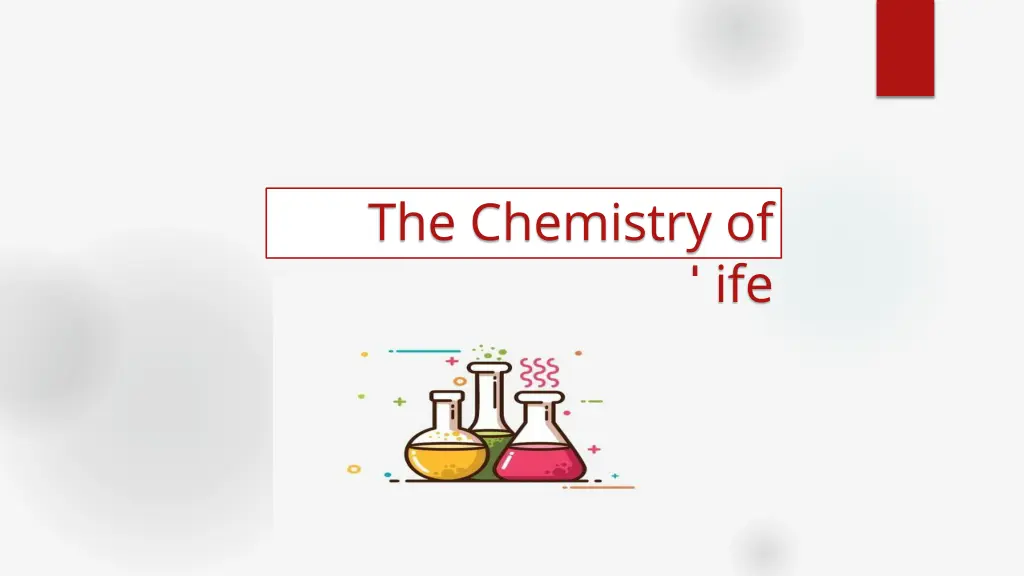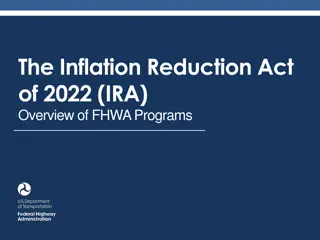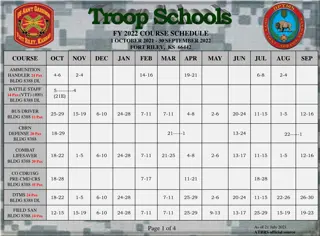
Understanding the Chemistry of Life and Organic Molecules
Learn about the essential role of biochemistry in living organisms, the significance of elements and compounds, and the composition of organic molecules like proteins. Explore how proteins function in various classes such as regulatory, transport, structural, and protective, influencing vital processes in the body.
Download Presentation

Please find below an Image/Link to download the presentation.
The content on the website is provided AS IS for your information and personal use only. It may not be sold, licensed, or shared on other websites without obtaining consent from the author. If you encounter any issues during the download, it is possible that the publisher has removed the file from their server.
You are allowed to download the files provided on this website for personal or commercial use, subject to the condition that they are used lawfully. All files are the property of their respective owners.
The content on the website is provided AS IS for your information and personal use only. It may not be sold, licensed, or shared on other websites without obtaining consent from the author.
E N D
Presentation Transcript
The Chemistry of Life
Biochemistry is the study of structure, composition (what things are made up of), and chemical reactions that occur in living things. Living things (biotic factors) depend on chemistry for life so biology and chemistry are closely related
Elements Pure substances that cannot be broken down chemically into simpler kinds of matter.
Organic Chemistry ORGANIC means comes from a Elements of Life 96% of living organisms is made of: carbon (C) hydrogen (H) oxygen (O) nitrogen (N)
Compounds Is a substance made of atoms of different elements bonded together in a certain ratio. Examples: H2O and CO2
Molecules Is two or more atoms held together by covalent bonds. Are the simplest part of a substance that retains all of the properties of the substance and exists in a free state. Some molecules are large and complex.
bodies are made of: carbohydrates sugars & starches proteins fats (lipids) nucleic acids DNA, RNA
Four Major Classes of Organic Molecules Proteins The majority of the processes that take place in the body occur because of proteins!!! The elements that make up proteins are C, H, O, & N
Regulatory (ex: Enzymes) Controls the rate of reactions in your body Transport (ex: Hemoglobin transports O2) Sending nutrients to different parts of the body Structural (ex: collagen, found in skin and bones) Forms/ makes up different parts of the body Protective (ex: antibodies protect against disease) Makes cells that act as fighters for the body
Nucleic Acids The function of nucleic acids is to store and transmit genetic info The elements that make up nucleic acids are C, H, O, N, & P Two types: DNA (Deoxyribonucleic Acid) RNA (Ribonucleic Acid)
Each nucleotide is made up of: A 5-carbon sugar A phosphate group A nitrogenous base
Carbohydrates Main source of energy for living things Plants and some animals use carbohydrates for structural purposes Made up of sugars Monosaccharide (monomer) = 1 single Disaccharide = 2 sugars Polysaccharide = many/more than 2 sugars
Lipids Used to store energy (for the long term) Important in making your cell membranes & waterproofing the certain coverings in the body Example: Cell Membranes Insulates/ protects your bodies organs (like a cushion) Examples Fats, Oils, and Waxes






















